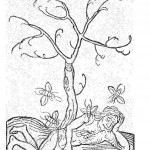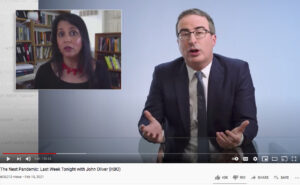Ok, I know this video is already appearing everywhere but here it is, again. I’ve always found these quite moving, although I’m not sure if it is the fact of seeing so many peacocks and divas putting aside their egos to be filmed singing side-by-side chorus style or the sentiment that “we are the world.” It is a lovely notion. But the idea that “we are the ones”–that is pop consumers and donors–who singlehandedly make the world better? Not so lovely. Final question. Where is Bono?
Month: February 2010
The Malaria Consortium is putting on a 8-week exhibition of photographs featuring malaria at the UN headquarters in New York in advance of World Malaria Day on April 25. This weekend, the New York Times featured a selection of the photos, with a brief article on the history of the scourge. Check it out here.
The captions on the photos are the best part. Note that the mosquito-catching technique featured in slide 5 is pretty controversial. Using humans as live bait for malarial mosquitoes can certainly endanger them. I also found the quote on slide 9, which pictures two Nigerian children recovering from malaria (mostly naked, on a shorn mattress), quite telling. The father of the children describes their illness and treatment and then says, “It is not that we are not concerned, it is just normal.” A hint of the social reality of malaria in Africa, where people think of malaria the way we think of the flu–completely undermined by the story told by the dark, shadowy photograph alongside it.

Harrison Ford, who stars in "Extraordinary Measures" with Brendan Fraser
The Lancet published my review of “Extraordinary Measures,” a paean to the wonders of for-profit drug development, this week. “Compared to, say, espionage or alien warfare, the drug development business rarely appears on the big screen, and its few cinematic portrayals generally involve sinister white-coated characters doing shadowy experiments. In that sense, the new film Extraordinary Measures , in which a desperate father and biochemist race to develop a cure for a rare gene marks a refreshing departure…”
February 18, 2011. 10:50 am. “The Fever: how malaria has ruled humankind for 500,000 years.” Lecture followed by informal discussion and book signing. Free and open to the public. Carleton College, Northfield MN
Add King Tut to the list of famous personages felled by malaria. Tut died at age 19 in 1324 BC. According to a new study in JAMA, scientists have found genetic evidence of Plasmodium falciparum lurking in his mummy.
Tut’s a famous guy but he isn’t malaria’s earliest known victim–not by far.
Tut died some two thousand years ago. In 1994, scientists found antigens to plasmodium parasites in 5,000-year-old Egyptian and Nubian mummies. Check it out here. References to malaria have also been found in 4,000-year-old Sumerian and Egyptian texts. But we know malaria’s been a much older scourge than that, thanks to molecular clock techniques that analyze the parasite’s genome. We’ve probably had it since we descended from apes.
<a name=”fb_share” type=”button_count” share_url=”http://soniashah.org/2010/02/malaria-killed-king-tut-among-other-ancients/” href=”http://www.facebook.com/sharer.php”>Share</a><script src=”http://static.ak.fbcdn.net/connect.php/js/FB.Share” type=”text/javascript”></script>















